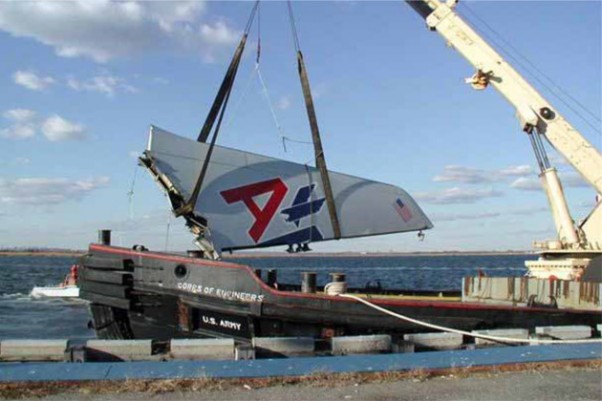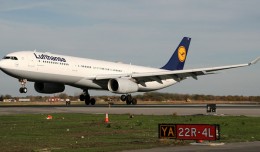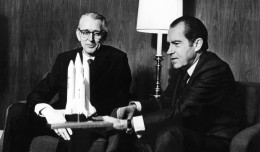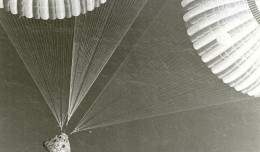2009: After coming to a stop following an emergency landing, a RwandAir Canadair CRJ-100 (5Y-JLD) throttles up again without pilot input and crashes into a building at Kigali Airport. One passenger dies at the hospital.
2001 – American Airlines Flight 587, an Airbus A300 (registered N14053) flying from New York’s JFK Airport to Santo Domingo, Dominican Republic, crashes in Belle Harbor, NY, killing all 260 on-board and five on the ground. The crash would be attributed to separation of the vertical stabilizer from the fuselage due to overuse of rudder as the aircraft flew through wake turbulence left by the aircraft in front of it, a Japan Airlines 747. Both engines also separated from the aircraft during its 2,800 ft freefall.

American Airlines Flight 587 crash site in Belle Harbor. (Photo by NOAA)
1996 – The Charkhi Dadri mid-air collision, between Saudi Arabian Airlines Flight 763 (a 747-100 registered HZ-AIH) and Kazakhstan Airlines Flight 1907 (an IL-76 registered UN-76435), kills a total of 349 people, making it the deadliest mid-air collision in aviation history. The Kazakh aircraft was cleared to descend to 15,000ft, but leveled off at 14,500ft instead, into the path of the departing Saudi airliner. The IL-76’s tail sliced off the 747’s wing, making the Boeing spiral towards the ground, reaching 705mph at impact. The IL-76 remained somewhat stable but still crashed in a field, with 4 passengers surviving for a short while before succumbing to their injuries.
1995: American Airlines Flight 1572, a McDonnell Douglas MD-83 (N566AA) carrying 78 people, lands short of the runway at Bradley International Airport in Hartford. Despite descending through a line of trees which caused the engines to flame out, only one passenger is injured. Investigators blame the pilots for using an old altimeter setting in rapidly deteriorating weather conditions, causing inaccurate altitude readings.
1989 – California Polytechnic State University flies the first human-powered helicopter
1984 – Space Shuttle astronauts snare a satellite, the first ever “space salvage.”
1981 – Space Shuttle Columbia is launched on mission STS-2, marking the first time a reusable, manned spacecraft has flown to space twice. It is also the last shuttle mission to use a white-painted fuel tank. Future missions would leave the tanks in their unpainted, orange state, saving about 600 lbs that could instead be used for payload.
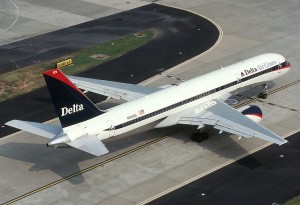
Photo by JoePriesAviation.net
1980 – Delta Air Lines orders 60 Boeing 757-200s, the largest single order at the time for any airliner type.
1980 – Voyager 1 makes its closest approach to Saturn, flying 77,000 miles above its surface and taking photo of its rings.
1921 – The first air-to-air refueling is completed when American Wesley May steps from the wing of one aircraft to that of another carrying a five-gallon can of gasoline strapped to his back.
1919 – Keith and Ross Smith set out to fly a Vickers Vimy, registered G-EAOU, from England to Australia, the first flight between these two places. They arrive in Darwin on December 18.
1912 – A Curtiss Triad floatplane becomes the first aircraft to be launched by catapult, at the US Navy’s Washington Navy Yard, being catapulted by a compressed air system from an anchored barge.
1903 – The 1st fully practical airship, the Lebaudy, makes a successful flight in Paris, France. The 190-foot-long airship flies 38.5 miles, achieving a speed of 25mph.


